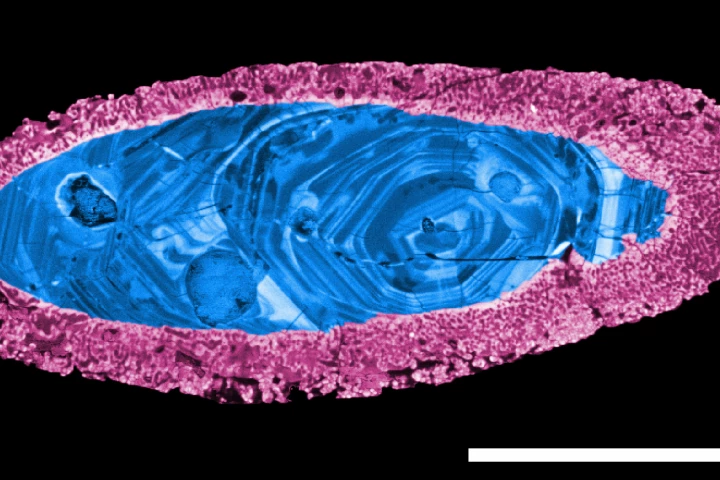Impact
-
When a car crashes into a roadside object at an intersection, chances are pretty high that object will be a traffic light pole. If it's a new energy-absorbing pole, however, the likelihood of injury or even death may be significantly reduced.
-
About 66 million years ago, a gigantic object crashed into the Earth, triggering a mass extinction that took out the dinosaurs. Now, scientists say they’ve traced the culprit back to its point of origin, identifying it as a “dark primitive asteroid.”
-
Around 66 million years ago, a gigantic asteroid smashed into the Earth and ended the reign of the dinosaurs. Now, researchers have discovered direct evidence of this cataclysm – fossilized “megaripples” from the tsunamis that immediately followed.
-
Scientists have identified the oldest impact site ever to scar our planet’s surface. The body that formed the Yarrabubba crater in the Australian outback struck Earth 2.229 billion years ago, and may have helped end a global ice age.
-
Helmets could soon offer better protection while also being more comfortable, thanks to a new padding material developed by HRL Laboratories. It's claimed to be better than foam at withstanding impacts, while also keeping heads cooler and drier.
-
Buildings that are constructed with military or civil defense applications in mind need to be tough. It was with this in mind that a new form of concrete was recently developed, that is far more resistant to cracking than regular types.
-
A drilling expedition to the Chicxulub crater turned up new details of the immediate aftermath of the asteroid impact that killed the dinosaurs.
-
According to research conducted by Canadian materials engineering technologist Albert Beyer, about 68 percent of hockey, skiing and snowboarding-related concussions are caused by impacts to the back of the head. With that in mind, Beyer created The Goose Egg.
-
A few months ago, the asteroid 2006 QV89 grabbed headlines thanks to a slim chance of striking Earth this September. But now the potentially-hazardous space rock has missed its appointment. ESA has confirmed that the asteroid hasn’t appeared in the sky yet, ruling out an impact any time soon.
-
Observations have shown that the “back” of the Moon has a thicker crust and an extra layer of material compared to the side that faces Earth. Now, simulations have revealed one possible, explosive explanation – an impact with a huge object early on in the Moon’s life.
-
Woodleigh Crater in Western Australia is one of the largest on Earth. But now, researchers from Curtin University have discovered new evidence that the crater could be bigger than previously thought – thanks to the presence of one of the rarest minerals ever found.
-
According to new research from Tohoku University, there was only a 13 percent chance of the mass extinction event that occurred 66 million years ago, and if the asteroid had struck almost anywhere else on the planet, the dinosaurs could have survived.
Load More











